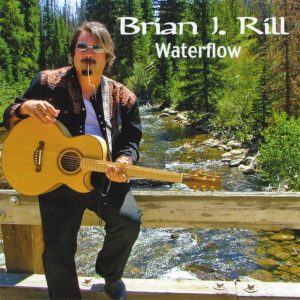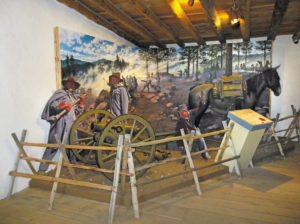By George Sibley
A quarter-century ago, shortly before starting this magazine, Ed Quillen wrote a major essay for High Country News – preceded by a two-day conference in Denver Ed had instigated with HCN publisher Ed Marston and the Pacific Foundation, assembling a motley of regional journalists, environmentalists, educators and other western thinkers to explore the question (slightly subversive, given the location): “Is Denver necessary?”
The essay appeared a few months after the conference in the May 3, 1993, issue of HCN, under the title “Now that Denver has abdicated, who will coordinate and inspire the West?” The article was primarily an exploration of what Ed saw as a deteriorated relationship between Denver and its Colorado hinterland – that’s us, folks. Like it or not, we are bound to the Denver branch of metropolitan America by networks of transportation, finance and politics in about the same way that planets are gravitationally bound to stars.
Ed’s essay* is worth revisiting for a number of reasons today in Trumptime, but I went back to it because I vaguely remembered that he’d said something in it that related to my column last month, cogitating on “good jobs” and the emperor’s promise to bring them back, whatever they were.
In his essay, Ed chronicled the transformation of Colorado from the 1860s through World War II, when Denver grew from one among many mining camps to the Queen City of the Plains, to which all Colorado roads and railroads led, a vigorous young metropolis absorbing most of the resource wealth of the rest of the state, and exporting back the resulting wealth of finished goods. He told of the early movers and shakers who invested in the development of industries, transportation systems and financial structures in the emerging hinterland – investments not done altruistically: the city needed to capture the raw resources of the state and bring them and the value-adding work they represented to the city, rather than letting some “thousand points of light” grow up around the state with their own local industries. “Hinterland” etymologically is “the land (left) behind.”
[InContentAdTwo] But Ed then contrasted that with the situation in the 1990s when evolving systems of transportation and finance had globalized metropolitan America, to the extent that it no longer needed “local” hinterlands. Denver’s principal growth industry by then was the further growth of Denver – a convention center, international airport, and thousands of new homes and their infrastructure and malls providing jobs for thousands more new residents who would find work servicing new waves of new residents – and on and on in a cycle some might see as vicious. And the lumber for all that came from the Northern Rockies and Pacific states rather than the Southern Rockies’ little trees; steel came from Japan or China rather than Pueblo mills; food and everything else came from everywhere else, and the quid pro quo incentive to invest in the local resource region disappeared.
The relationship had deteriorated by then to a feeling in the hinterlands that Denver only looked to the rest of the state when it wanted more water; when Ed wrote the essay, the Upper Rio Grande, the Upper Gunnison, the Blue and the Eagle River Basins were each grappling with proposed Front Range transmountain water diversions.
But, Ed asked, if our hinterland no longer had a constructive relationship with Denver, what was our economic and cultural relationship with the rest of the world? He saw it coming down to two cultural and economic models of city-hinterland organization: the Chicago model and the Los Angeles model.
The Chicago model was what we had been part of historically: a city developing an industrial base that needed an industrial hinterland to supply raw resources to its industries and then to buy its value-added products. Grains in, flour and bread out; cattle and hogs in, beef and bacon out; logs in, lumber and furniture out; ore in, metals and metal things out; oil in, gas and fuel out; coal in, power to run it all and some to send out. The Chicago model was essentially supply regions, industries and markets organized around the production and distribution of the stuff, things, basic to living. Denver created itself and organized its hinterland through World War II on the Chicago model.
The Los Angeles model, on the other hand, was based on creating not things but experiences. Los Angeles has its heavy industries, of course, but the production and distribution of dreams, entertainments and adventures is what it’s known for. Ed described it thus:
Chicago was “hog butcher to the world.” Los Angeles is the home of Hollywood and Disneyland, which market images and contrived thrills. Recreation is no longer a diversion, but a profit center, and an economy can be built around selling recreational experiences. The L.A. culture comes with a West Coast attitude toward nature that might be unfairly summarized as “groove on the scenery.”
Those, then, were the two cultural and economic models that Ed saw fighting for the vast hinterlands of the Mountain West, including Central Colorado. He offered examples of cultural conflicts in the Mountain West resulting from collisions between the two models that he saw as antagonistic:
Midwest says water must be stored and diverted and put to beneficial use; West Coast says rivers should run free so you can raft down them …. Midwest says get an honest job bucking hay or chasing cows or mucking rock. West Coast says it’s just fine to entertain the tourists – it is, after all, the home of Disneyland, the archetype of sanitized thrills, where you can experience Frontierland and Adventureland and even good old Main Street, USA.
That pretty directly addresses the “meaningful work” issue I wrote about last month, and brings it down on the ground to a Central Colorado moving “away from an industrial resource and extraction economy and toward a new world where we sell not resources or crops, but quality recreational experiences.”
We need to remember that Ed wrote this a quarter century ago, but I don’t think anyone would argue that it’s not still accurate today. Does it shed light on the Trumpish issue of “good jobs” – “honest jobs,” as Ed, in Ed’s way, put it? Most of Central Colorado lives economically with hinterland manifestations of both the Chicago and L.A. models in an uneasy truce. Our main remaining manifestation of the Chicago model is our agriculture – primarily stock growing and production of animal feed for the remaining Denver-area Chicago-model meat packers, but with some of the hay going to upscale horsey places that are more part of the L.A. model for the future. Logging is currently on the upswing due to the beetle infestations, but that will probably be temporary. Coal mining is in decline, and there is very little hardrock mining – although some alleged rare-mineral and copper deposits may be tapped in the future, and there is some oil and gas development that peters out with altitude.
No one in Central Colorado questions that these empoyments are honest work, but cumulatively the Chicago model industries – agriculture, mining, manufacturing – have been losing ground since the 1970s and now provide less than 10 percent of the region’s employment. The rest is either government (14 percent, reflecting the new levels of socioeconomic complexity) or everything that is lumped under “services” – primarily all driven by the L.A model, with recreation, real estate, arts and entertainment leading the economy above 7,000 feet. Those born and raised by the Chicago model – including, so he says, President Trump – are pretty unambiguous about whether that service work is “meaningful work,” compared to farming or mining, even though much of it, like river-rafting or ski-instructing, requires high levels of responsibility and experience, and involves shepherding people through thrills that are not as Disneyland-safe as Ed suggests.
But as important as the production of basics is – food, lumber, ores, et cetera – it is also true that we “shall not live by bread alone.” Once we have enough bread, a roof over our heads and work of our own that has meaning to the larger culture under the Chicago model, we do begin to look for the experiences and adventures promised in the L.A. model. A mature economic society, which we might someday be, probably wants a society that seamlessly fulfills both models.
But in the meantime, it is interesting if frustrating to live in a bifurcated society where those living by the Chicago model want to put water from the streams to work in the fields, while those living by the L.A. model want to keep it in the streams for fishing and floating.
It was even more interesting to revisit Ed Quillen’s still relevant master work. We miss him.
* Available in the High Country News archives on their website at www.hcn.org/issues?b_start:int=560 (scroll down). The June 14, 1993, issue also had some longish responses from both city and hinterland.
George Sibley lives and works, such as it is, in the Upper Gunnison River valley.


